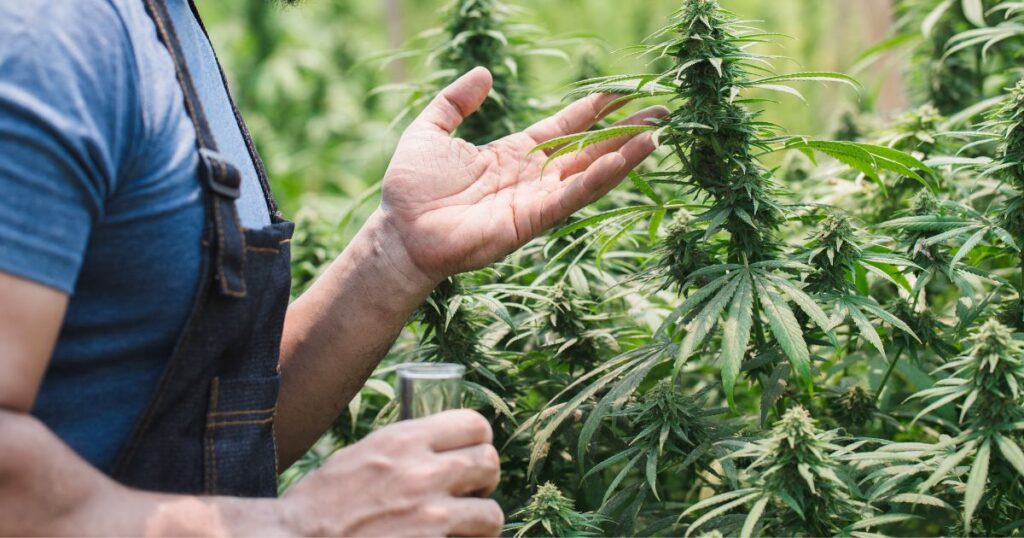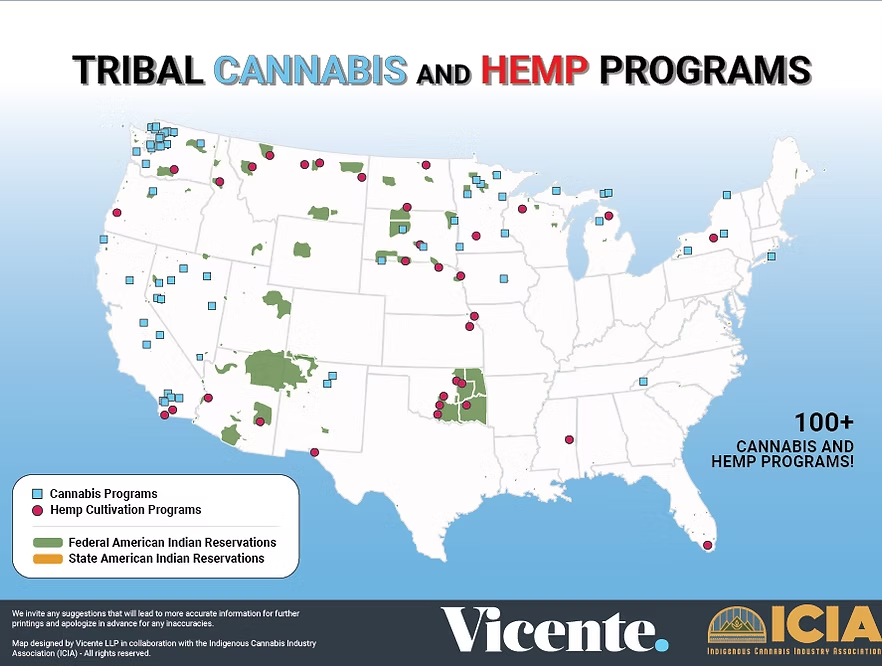Recent data from the Indigenous Cannabis Industry Association and collaboration with Vicente LLP reveal an encouraging trend in the United States’ evolving cannabis industry. Around 26% of federally recognized Indigenous communities in the continental U.S. are engaged in marijuana or hemp programs. These cannabis ventures are not just about regulatory innovation; they represent a source of revenue, community betterment, and cultural sovereignty. For Indigenous communities stepping into this space, cannabis is more than a plant or a product—it’s a vital part of building self-sustaining economies.
The Emergence of Indigenous-Led Cannabis Programs
The driving force behind this movement lies in the sovereign regulatory authority of Tribal nations. Indigenous communities can forge their own cannabis laws, often operating without the restrictions seen in neighboring state jurisdictions. This flexibility has enabled them to establish dispensaries, cultivation facilities, and hemp operations within their territories, irrespective of local or state cannabis bans. This ability ensures an economic model less reliant on fluctuating governmental aid and more grounded in self-reliance.
The federal government has also played a part in facilitating this progress. The Department of Justice’s 2014 Wilkinson Memo deprioritized enforcement of federal cannabis laws on Tribal lands. This shift has empowered Indigenous people to explore cannabis markets on their terms, enabling the development of unique regulatory frameworks tailored to their communities’ specific needs and goals.
A Decade of Progress in Tribal Cannabis
Since 2015, when the Squaxin Island Tribe opened the first state-recognized Tribal cannabis business in Washington, Indigenous-led cannabis programs have flourished across the country. This development spans both medical and recreational marijuana, as well as federally approved hemp programs. States like California, Minnesota, Nevada, and Washington are among the most notable hubs for Tribal cannabis activities.
For instance, the Red Lake Band of Chippewa Indians in Minnesota leveraged the state’s pro-cannabis stance to establish early marijuana dispensaries before the state marketplace was fully operational. Similarly, the Eastern Band of Cherokee Indians launched North Carolina’s only legal cannabis dispensary, creating a rare opportunity to serve not only its Tribal members but also visitors from across the state.
These examples highlight the adaptability of Indigenous communities in tapping into emerging cannabis opportunities. Many Tribal enterprises now collaborate in clusters to create supply chains and distribution networks, supporting shared advantages over non-Tribal businesses in the industry.
Economic Benefits for Indigenous Communities
Cannabis and hemp programs offer communities a much-needed opportunity to diversify revenue streams. Historically, Tribal nations have relied heavily on gambling operations or federal funds. However, these funding sources can fluctuate dramatically due to policy shifts or economic downturns. Cannabis, by contrast, offers a more stable and scalable economic option as the market continues to grow.
The financial impact of these enterprises stretches far beyond mere profit margins. Cannabis programs directly influence local employment rates, with Tribal businesses providing job opportunities in cultivation, retail, compliance, and distribution. These jobs enable individuals to develop specialized skills and contribute to their communities’ economic independence.
Furthermore, cannabis-generated revenue often gets reinvested to fund community services like healthcare, education, and housing programs. For many Tribal nations, these industries are becoming a beacon of hope, highlighting what’s possible through self-reliant business practices.
Challenges and Opportunities
Despite the successes, Indigenous communities face unique challenges in the cannabis industry. Federal ambiguity surrounding cannabis, particularly as it remains illegal at the federal level, can deter potential investments and partnerships. Additionally, access to cannabis banking services remains elusive for many Tribal businesses due to conflicting regulatory structures.
Nonetheless, these hurdles have also spurred innovation. By building their own regulatory models, Indigenous communities have demonstrated operational agility and entrepreneurial resilience. Partnerships with cannabis advocacy groups like the Indigenous Cannabis Industry Association (ICIA) offer additional leverage, providing resources, data, and advocacy to shape a sustainable future for Tribal cannabis.
A Model for the Future of Cannabis
Indigenous communities are not just participants; they are innovators shaping the cannabis industry’s next chapter. Their ability to think critically about regulation, cultivate unique business ecosystems, and prioritize community empowerment serves as a model for states and nations around the globe.
Andrew Livingston, a researcher involved in studying Tribal cannabis trends, states, via Forbes, “Indigenous cannabis programs are a vital piece of America’s cannabis movement. The adaptability of these businesses exemplifies how locally governed cannabis programs can thrive and meet specific cultural and economic goals.”
The current momentum is both an inspiration and an invitation. Countless communities across the United States stand to benefit from examining Tribal success in the cannabis industry. By doing so, they can learn to create economic systems that are not only efficient but also equitable.
Cultivating Independence and Growth
The involvement of Indigenous communities in the cannabis and hemp industries is a testament to the larger potential of economically self-reliant models. Revenue from these programs does far more than fund operations; it bolsters the very pillars of community life, from healthcare accessibility to educational resources.
Moving forward, continued collaboration among Indigenous leaders, policymakers, and advocacy groups like the ICIA will be critical. These partnerships will ensure that the industry prioritizes sustainability, equity, and respect for Tribal sovereignty.
For those watching the cannabis space unfold, there’s much to learn from the 26% of Indigenous communities leading this charge. Their progress not only strengthens their local economies but sets an invaluable precedent for a more inclusive and prosperous cannabis industry nationwide.

















